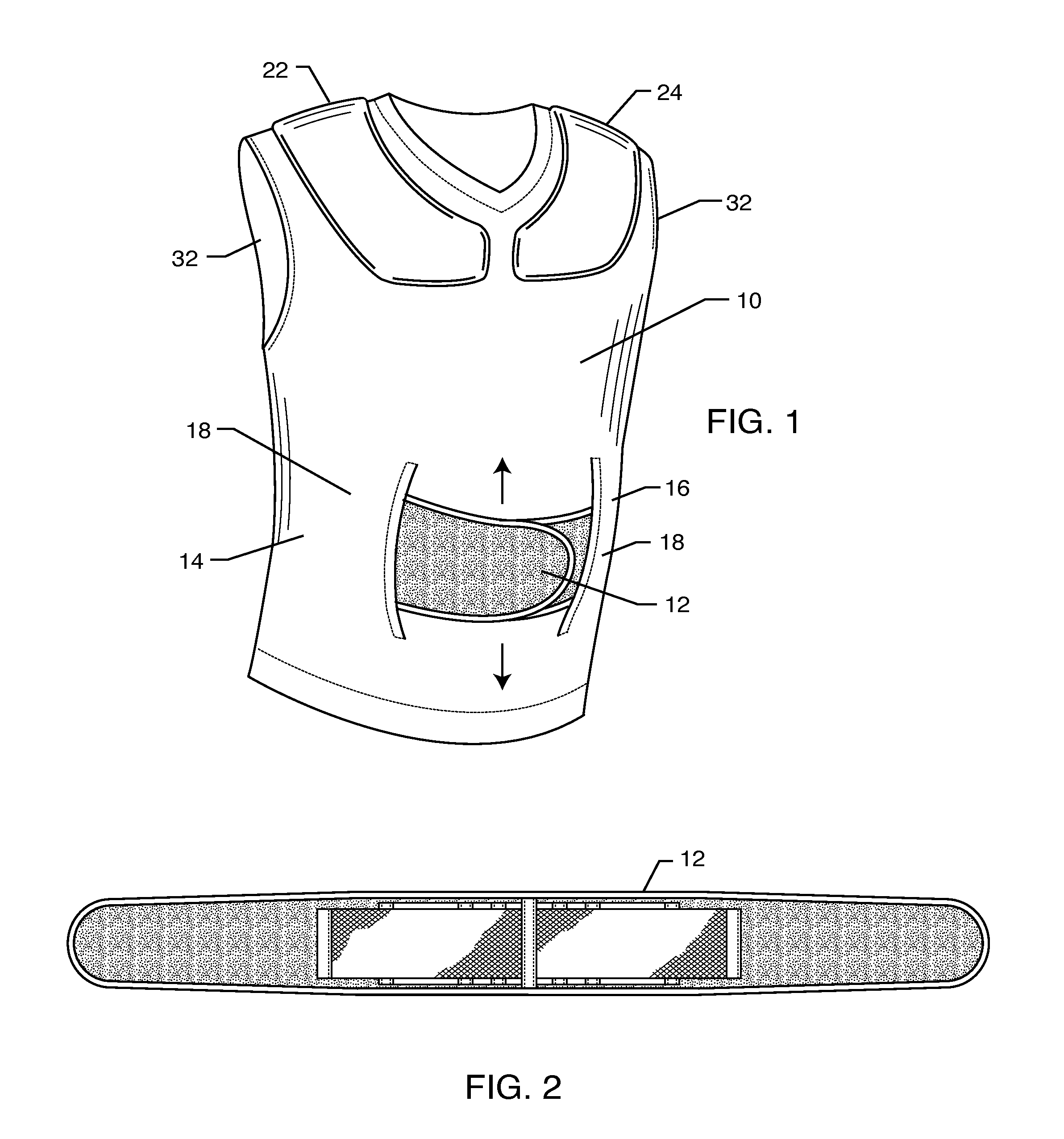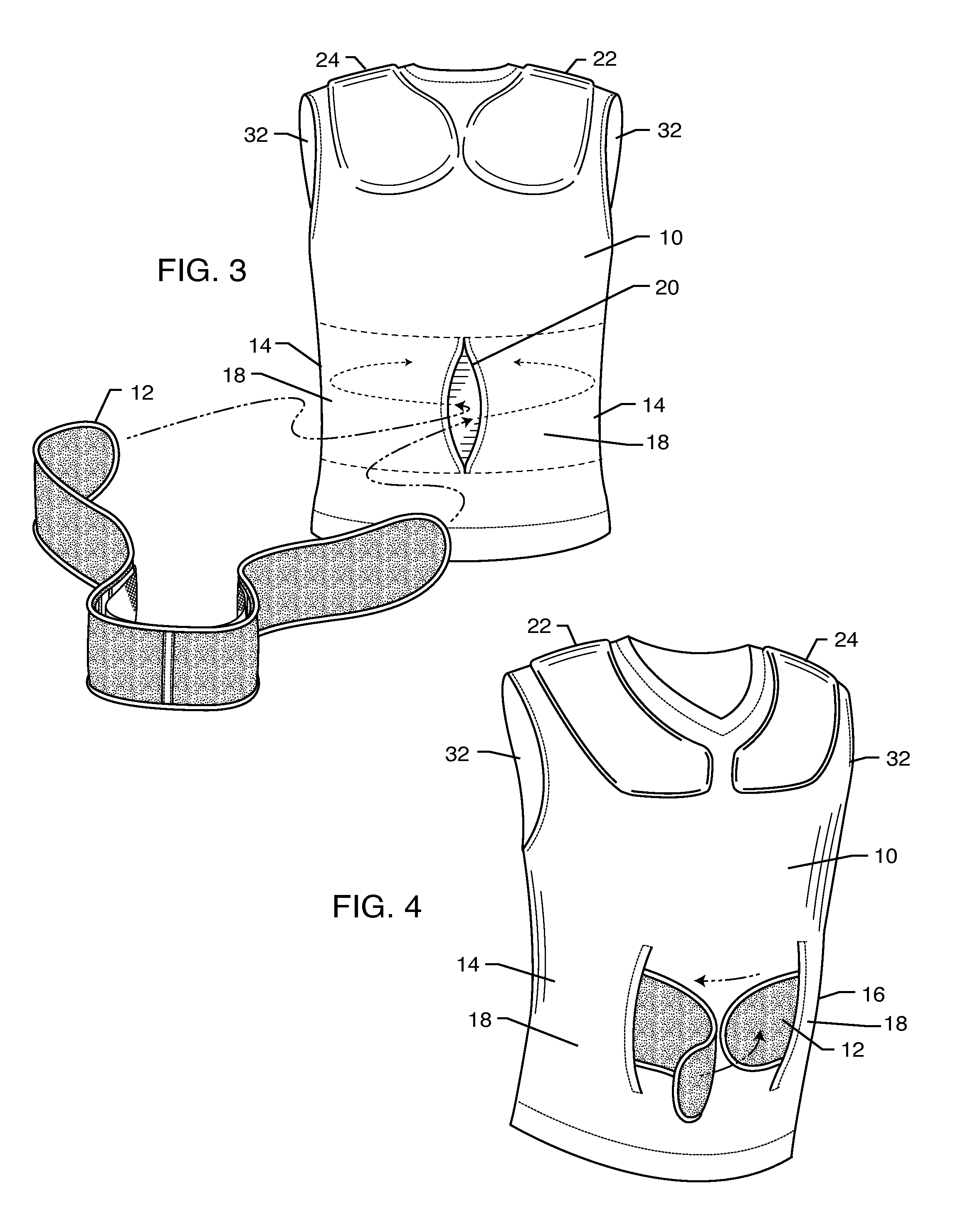Support / compression vest
- Summary
- Abstract
- Description
- Claims
- Application Information
AI Technical Summary
Benefits of technology
Problems solved by technology
Method used
Image
Examples
Embodiment Construction
[0020]FIG. 1 is a perspective view of an exemplary garment 10 embodying the present invention. The belt 12 of FIG. 2 is placed within a right side fabric panel 14 and left side fabric panel 16 which are located around the abdomen portion of the garment 10. The fabric of the garment 10 is made of a compression-like material sufficiently resilient and flexible. Shirts made of such materials are generally referred to as compression shirts. Compression shirts are a relatively new devise which add support to a person's upper torso. A compression shirt is a tight-fitting shirt made of a resiliently flexible material such as spandex. They are typically very breathable and are usually worn during exercising or during various sporting activities. They are typically excellent moisture managing garments and can help wick moisture away from the body more efficiently, keeping the user cooler and drier during exercise. Compression shirts cut down on excess muscle vibration which can cause extra f...
PUM
 Login to View More
Login to View More Abstract
Description
Claims
Application Information
 Login to View More
Login to View More - R&D
- Intellectual Property
- Life Sciences
- Materials
- Tech Scout
- Unparalleled Data Quality
- Higher Quality Content
- 60% Fewer Hallucinations
Browse by: Latest US Patents, China's latest patents, Technical Efficacy Thesaurus, Application Domain, Technology Topic, Popular Technical Reports.
© 2025 PatSnap. All rights reserved.Legal|Privacy policy|Modern Slavery Act Transparency Statement|Sitemap|About US| Contact US: help@patsnap.com



